 |
| The Great Gatsby (2013) |
Written by Leigh Kolb
Critic Kathryn Schulz, in “Why I Despise The Great Gatsby,” bemoans the acclaim that the novel receives in literary circles. She says, “It is the only book I have read so often despite failing—in the face of real effort and sincere intentions—to derive almost any pleasure at all from the experience… I find Gatsby aesthetically overrated, psychologically vacant, and morally complacent…”
Well, yes.
Isn’t that the point?
Had Schulz replaced The Great Gatsby with “The American Dream” (rags-to-riches wealth and power and the reward of lavish lifestyles and romantic fulfillment), then she would have been spot on, and would have captured the exact message that The Great Gatsby has conveyed to generation after generation, ceaselessly beating us against the current… sorry.
I was looking forward to Baz Luhrmann’s much-anticipated adaptation of The Great Gatsby, because I love his Romeo + Juliet so much it hurts. He got it so right, so I figured he could get this right too, especially with Leonardo DiCaprio on board.
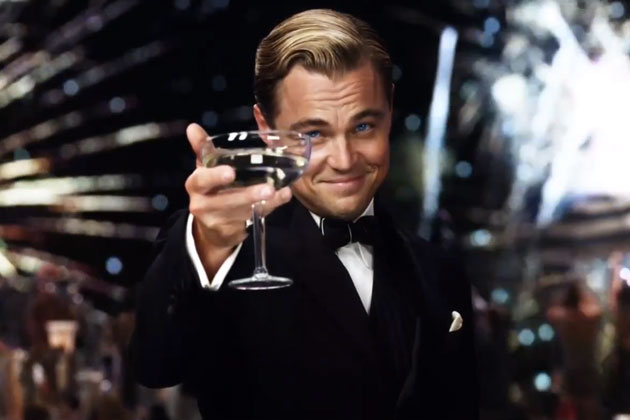 |
| Cheers, indeed. |
He kind of got it. The first half of the film is lavish and screams “Baz Luhrmann.” It was exactly what I wanted. Jay-Z’s “100$ Bill” captured the 1920s “Jazz Age” aesthetic of white people co-opting black music. The driving hip hop in the first few scenes exemplified the “hip-hop fascination with money, power, violence and sex,” that soundtrack executive producer Jay-Z saw in Jay Gatsby.
But something changes. It seems as if Luhrmann wanted too badly to include most of F. Scott Fitzgerald’s text, and his own style was lost in that translation. I wanted the film to be jarring and fast, or painfully slow, with experimental music and filmography throughout. During the second half of the film, the soundtrack became more traditional and subdued. Luhrmann seemed to flirt with style—the typed letters at the end of the film (that I’d like to forget), the slow-motion shot of Tom hitting Myrtle—but there was something lacking in consistency.
That said, Luhrmann does let us focus—even temporarily—on some poignant themes of the novel. Tom’s destructive masculinity (his trophy room and his racism expose his character) go unpunished in his patriarchal society. Daisy’s vapidity highlights the expectations of a beautiful, wealthy woman, when her hopes for her daughter are that “she’ll be a fool—that’s the best thing a girl can be in this world, a beautiful little fool.” Daisy herself attempts to live that role, and she escapes punishment because of who she is. Tom and Daisy’s privilege shields and protects them. Their “old money,” in contrast to Gatsby’s “new money,” shows the impenetrable American truth that you might be detestable, but you call the shots when you have money and connections. Gatsby’s desperate drive for that green light—to be loved—can be bought only momentarily.
The fact that “The Great Gatsby Still Gets Flappers Wrong” didn’t bother me, really (although Hix’s article is incredibly informative). Having an independent, empowered woman in The Great Gatsby would seem as false as the magical typewriter. No one in The Great Gatsby is supposed to be a character we want to identify with or aspire to be. The men are problematic, and so are the women.
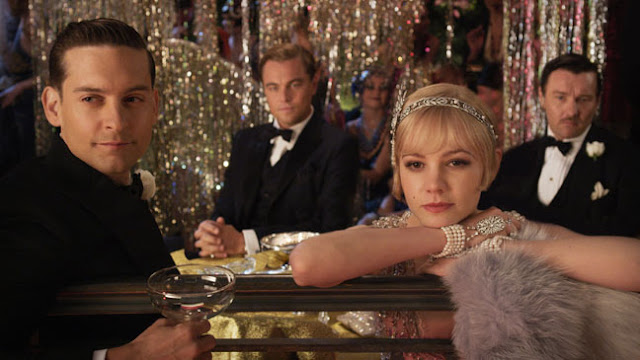 |
| Nick, Gatsby, Daisy and Tom at one of Gatsby’s parties. |
Luhrmann’s characters are often more sympathetic than the novel’s, but the core of who they are and what they represent is stable.
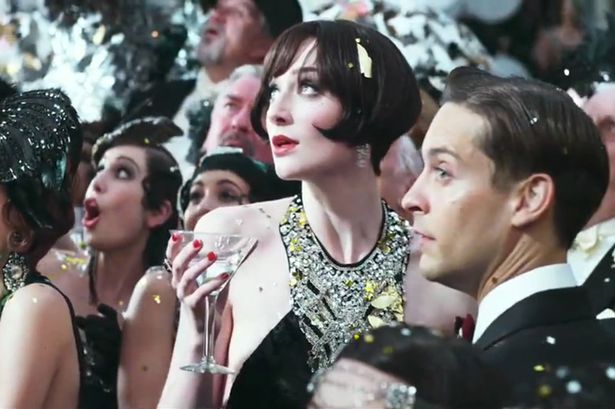 |
| Jordan Baker’s role was minimized, but she was still a foil to Daisy’s carelessness. |
I would like to deny the storytelling technique that Luhrmann employs with Nick Carraway, but I cannot. I don’t think I would have minded if he’d framed the story as Nick writing a memoir; maybe I even would have forgiven the floating type if it had been consistent (but probably not). However, the fact that Nick begins telling the story to his therapist, who then encourages him to write it down, seems ridiculous. Nick seems just self-aware and self-involved enough to know he has a good story—he wouldn’t have needed someone to persuade him to write it down.
Tobey Maguire’s Nick has a doughy personality. He’s not too likable, but we don’t actively dislike him. Maybe we roll our eyes at him sometimes. He’s true to the novel, that’s for sure.
DiCaprio’s Gatsby is mysterious, beautiful, reserved and is able to elicit sympathy from the audience.
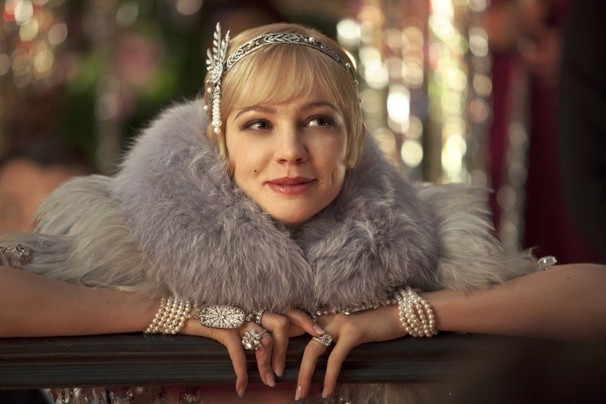 |
| Why yes, you can buy this headpiece from Tiffany’s. |
Carey Mulligan’s Daisy is not quite as off-putting as she is in the novel, which seemed to be Luhrmann’s goal. He didn’t completely deny the existence of the emptiness and disappointment the novel conveys, but he clearly wanted us to be swept up in the fashions and romanced by the gorgeous settings and people (and shirts!).
That (along with the inconsistent style) was my biggest problem with the film—it wasn’t depressing enough. Perhaps it was the lack of Gatsby’s father showing Nick little Jimmy’s meticulous plans, or the lack of a funeral scene, or maybe it was the floaty letters typing out Nick’s thoughts—I didn’t feel the empty weight of the futility of the American Dream, and the bitter disappointment of a life spent wanting more.
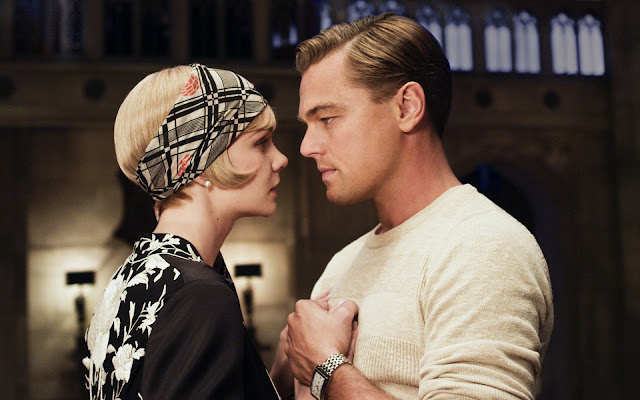 |
| Luhrmann gets caught up in the “romance.” |
I know Luhrmann can do it—he did it with Romeo + Juliet, with its era-bending dialogue and music, stylized filmography and heart-wrenching ending—but I think he got too caught up with the romance of Gatsby’s lifestyle (just like Nick did).
And that’s the great reverse dramatic irony of stories like Gatsby—yes, maybe audiences get on some level that Jay Gatsby’s story isn’t meant to be aspirational. But they relish it in anyway. Donald Trump’s hotel is offering the Trump Hotel “Great Gatsby” Package (for $14,999 you can live like an ill-fated socialite?); Brooks Brothers has “The Great Gatsby” collection. Gatsby is like Don Draper; their true legacy—disappointment, emptiness and the tragic nature of a re-imagined life that isn’t a dream come true—is packaged in fashion and good looks. That life looks exciting, we think. I want hosiery like Daisy’s, and parties like Gatsby’s. Conspicuous consumption is idolized.
But that’s not the point.
The American Dream is disappointing. Wealth is disappointing. Idealized romance is disappointing.
And then you die. And no one cares.
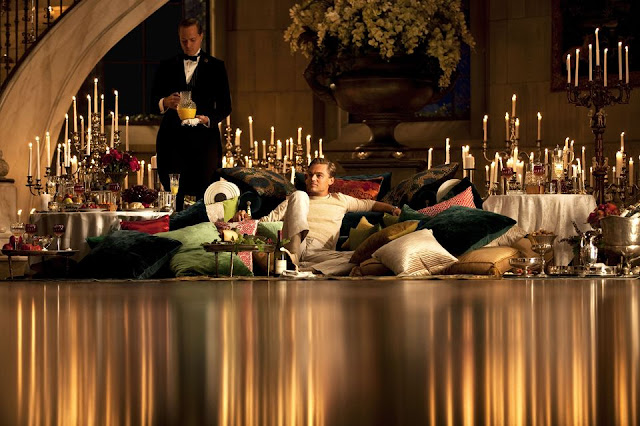 |
| All of this is meaningless. |
Luhrmann’s film and the marketing ploys surrounding it don’t seem to quite get at that. While I was let down, I suppose I’m not surprised. We live in a society obsessed with wealth, status and pulling oneself up from one’s bootstraps. To topple all of that over into an ash heap would be problematic for both the core of American mythology and for Hollywood.
Because if we focus on the tragedy of Jay Gatsby’s aspirations and the injustice of Tom and Daisy’s escape, then we would have to face the fact that the party is really over. But we can’t, and we don’t, so we go on, endlessly dazzled and distracted by shiny things (which women are especially interested in, evidently).
And perhaps that’s what Nick’s final words mean—we keep trying to go back, over and over, to this belief that the green light is obtainable, and it will make us happy. However, that light was not real in 1922, and it’s not real now. It’s just in 3D.
Leigh Kolb is a composition, literature and journalism instructor at a community college in rural Missouri.
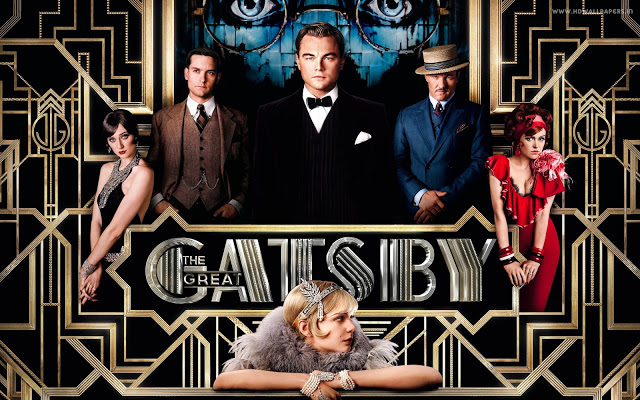
1 thought on “Conspicuous Consumption and ‘The Great Gatsby’: Missing the Point in Style”
Comments are closed.